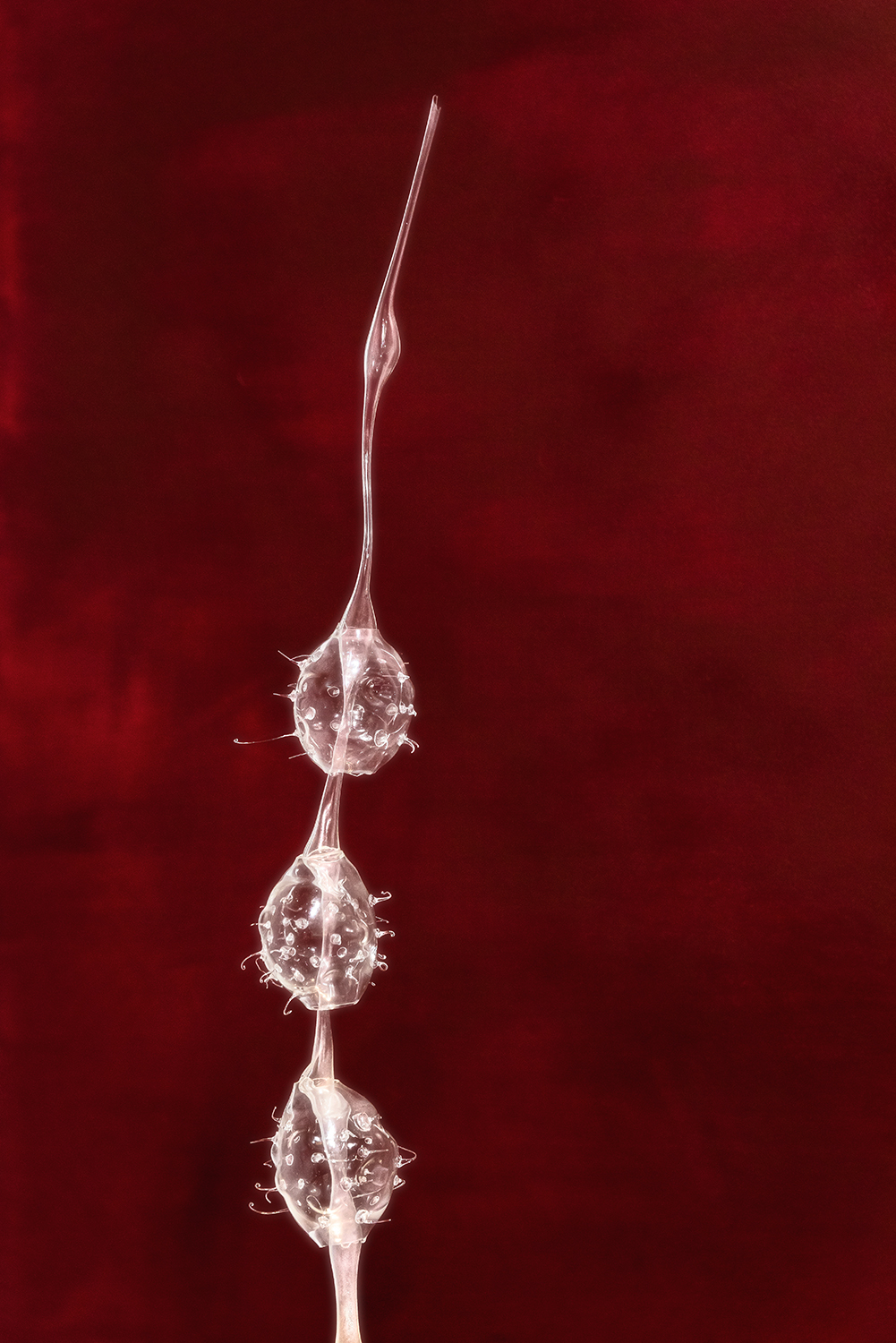Cyclosalpa Pinnata (Salpida).
2023, Barcelona.
23x 17 x 65 cm
Glass, Concrete and LED light.
Price upon request
The salpids (Salpidae), commonly known as salps, are a family of barrel-shaped, free-floating tunicates of the class Thaliacea. It moves by contraction, pumping water through its gelatinous body. The salpa forces the pumped water through its internal food filters, feeding on the phytoplankton that it filters from the water.
These creatures are made up of several rounded bodies that form a cylinder, for this reason the main glass structure is formed from a totally vertical glass body that goes through three round structures with spikes.
사이클로살파 피나타 (살피다).
2023, 바르셀로나.
23x 17 x 65 cm
유리, 콘크리트 및 LED 조명.
가격은 요청 시 제공됩니다.
흔히 살피다라고 불리는 살피과(Salpidae)는 갈조목(Thaliacea)에 속하는 통 모양의 자유 부유성 튜네이트과입니다. 젤라틴으로 된 몸체를 통해 물을 펌핑하면서 수축하여 움직입니다. 살파는 펌핑된 물을 내부의 먹이 필터를 통과시켜 물에서 걸러낸 식물성 플랑크톤을 먹으며, 이 생물은 원통을 형성하는 여러 개의 둥근 몸체로 구성되어 있으며, 이러한 이유로 주 유리 구조는 스파이크가 달린 세 개의 둥근 구조를 통과하는 완전히 수직인 유리 몸체로 형성되어 있습니다.
![Detail from Cyclosalpa Pinnata (Salpida) made with Blown Glass, exhibited at Plataforma 2, Plaja Studio]()
![Two lamps from Medi Terraneum collection exhibited at Plataforma 2, Barcelona, with Red Background]()
![Two lamps from Medi Terraneum collection exhibited at Plataforma 2, Barcelona, with Red Background]()
![Cyclosalpa Pinnata (Salpida) made with Blown Glass, exhibited at Plataforma 2, Plaja Studio]()
2023, 바르셀로나.
23x 17 x 65 cm
유리, 콘크리트 및 LED 조명.
가격은 요청 시 제공됩니다.
흔히 살피다라고 불리는 살피과(Salpidae)는 갈조목(Thaliacea)에 속하는 통 모양의 자유 부유성 튜네이트과입니다. 젤라틴으로 된 몸체를 통해 물을 펌핑하면서 수축하여 움직입니다. 살파는 펌핑된 물을 내부의 먹이 필터를 통과시켜 물에서 걸러낸 식물성 플랑크톤을 먹으며, 이 생물은 원통을 형성하는 여러 개의 둥근 몸체로 구성되어 있으며, 이러한 이유로 주 유리 구조는 스파이크가 달린 세 개의 둥근 구조를 통과하는 완전히 수직인 유리 몸체로 형성되어 있습니다.



